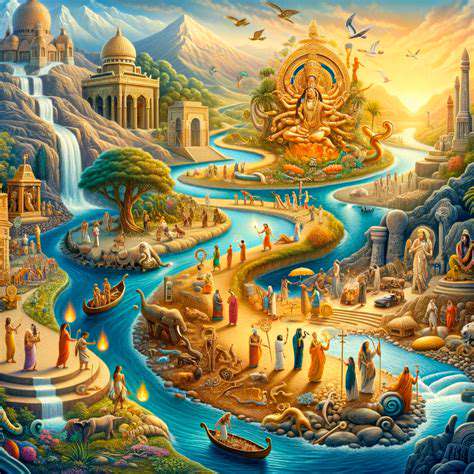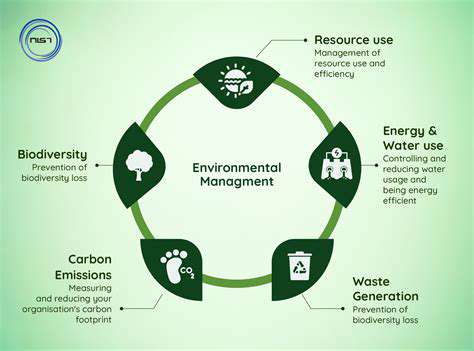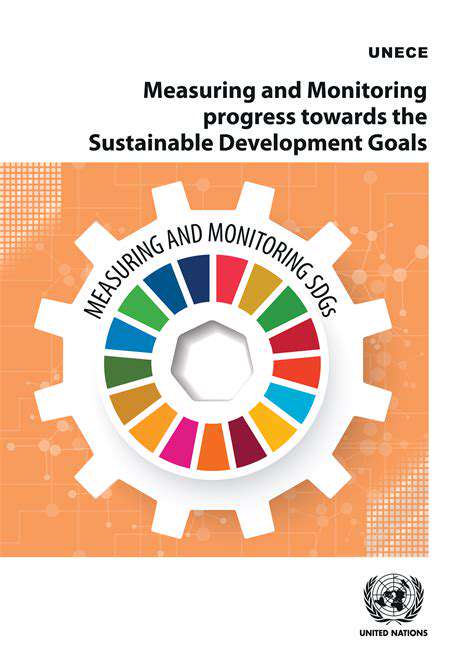Early River Civilizations and Trade
The fertile lands along major rivers, like the Nile, Tigris-Euphrates, and Indus, fostered the development of some of the earliest human civilizations. These societies, often reliant on predictable flooding for agriculture, created surplus food production, which allowed for population growth and the specialization of labor. This surplus, in turn, facilitated the emergence of trade networks. Early trade routes, often following the river courses, connected communities, allowing for the exchange of goods, ideas, and cultural practices. The rivers themselves became crucial arteries, facilitating the movement of people and resources, shaping the very foundation of these civilizations.
The ability to navigate these waterways was paramount. Primitive boats, crafted from readily available materials like reeds or wood, were essential for transporting goods, people, and information. These early river-based trade routes were not just about physical movement; they were also vital for the development of social structures, political organizations, and the evolution of early forms of governance. The interaction and exchange between different communities along the rivers fostered cultural exchange and innovation, laying the groundwork for the complex societies that would emerge later.
River Systems as Global Trade Routes
As civilizations grew and technologies advanced, river systems played an increasingly important role in global trade. The development of larger, more sophisticated vessels, the establishment of standardized weights and measures, and the evolution of more robust governance structures all contributed to expanding river-based commerce. These waterways facilitated the movement of goods from distant lands, connecting regions that would otherwise remain isolated. This interconnectedness led to the exchange of valuable resources, such as spices, silks, and precious metals, creating opportunities for economic growth and cultural enrichment.
The rivers became vital links in the global trade network, enabling the movement of goods and people over vast distances. This resulted in a complex interplay between different societies, leading to the spread of ideas, religions, and artistic styles. However, the challenges of navigating these waterways, such as unpredictable currents, seasonal variations in water levels, and the dangers of piracy, also shaped the development of these trade routes. The careful management of these resources and the development of sophisticated navigational techniques were crucial for success.
Modern Challenges and Adaptations
Even in the modern world, rivers continue to play a significant role in global trade, though the methods and challenges have evolved. While vast ocean liners and sophisticated shipping networks now dominate long-distance trade, rivers remain vital for transporting goods within specific regions. The importance of efficient river transport, especially in regions with limited access to other forms of transportation, remains undeniable. Navigating the challenges of modern river transport, including pollution, dam construction, and changing water levels, requires careful consideration and sustainable solutions for the future.
Furthermore, the impact of human activity on river systems is a significant concern. Understanding and addressing environmental issues, such as pollution, deforestation, and climate change, is critical to maintaining the viability of river trade routes. International cooperation and sustainable management practices are crucial to ensure that these waterways continue to support global commerce for generations to come. The future of river trade depends on our ability to balance economic needs with environmental responsibility.
Cultural Significance and Religious Reverence: Rivers as Sacred Spaces

Cultural Significance of Traditions
Cultural traditions are the threads that weave the tapestry of human history, binding generations together through shared stories, rituals, and practices. These traditions often reflect a community's values, beliefs, and understanding of the world. They provide a sense of identity and belonging, fostering a connection to ancestors and preserving a cultural heritage for future generations. Understanding these traditions helps us appreciate the diverse ways humans have lived and continue to live. This understanding is crucial for fostering tolerance and respect in a globalized world.
From intricate ceremonies to everyday customs, traditions encapsulate the essence of a culture. They provide a framework for social interactions, guiding behavior and expectations. These traditions, passed down through generations, reflect a deep-seated understanding of the world and its mysteries, shaping the way people interact with their environment and each other.
Religious Influences on Culture
Religion plays a profound role in shaping cultural practices and beliefs. Religious doctrines often dictate customs, rituals, and ethical guidelines that permeate various aspects of life, from social interactions to artistic expressions. Religious holidays and festivals, for example, frequently become significant cultural events, marked by unique traditions and celebrations.
Religious beliefs profoundly influence the art, architecture, and literature of a culture. Religious narratives often inspire artistic creations, shaping aesthetic preferences and artistic expressions. Religious principles can also influence the ways societies organize themselves, impacting political systems and social structures.
The Role of Rituals in Cultural Identity
Rituals are symbolic actions that hold significant cultural and religious meaning. They often mark important life events, such as birth, marriage, and death, and may also be performed regularly as part of daily or weekly routines. These rituals, whether elaborate ceremonies or simple gestures, provide a framework for understanding and celebrating the significance of life's milestones. These rituals are not simply practices, but powerful expressions of cultural identity.
Rituals can also be a powerful source of social cohesion within a community. They provide a shared experience and a sense of belonging, uniting people around a common purpose and belief. Participating in rituals often strengthens community bonds and fosters a sense of collective identity.
The Preservation of Cultural Heritage
Preserving cultural heritage is essential for maintaining a vibrant and diverse world. It involves recognizing the value of traditions, rituals, and beliefs passed down through generations. Maintaining these traditions ensures that valuable knowledge and stories are not lost to time. This preservation fosters not only cultural understanding but also social cohesion and respect for differences.
Efforts to document, share, and teach about cultural traditions are crucial for future generations. These efforts may include museums, cultural centers, educational programs, and community initiatives. By actively preserving these traditions, we ensure that the richness and diversity of human experience continues to inspire and enrich us.

The Future of Rivers: A Shared Responsibility
Protecting River Ecosystems
The health of our rivers is intrinsically linked to the health of our planet. Protecting river ecosystems requires a multifaceted approach, encompassing everything from reducing pollution to restoring riparian zones. Pollutants, including agricultural runoff, industrial discharge, and plastic waste, wreak havoc on aquatic life, impacting fish populations, disrupting the delicate balance of the food web, and ultimately affecting the entire ecosystem. Addressing these challenges demands international cooperation and a commitment to sustainable practices throughout the supply chain.
Restoring riparian zones – the vegetated areas along riverbanks – is crucial. These zones act as natural filters, trapping sediment and pollutants before they reach the river. Planting native vegetation not only improves water quality but also provides habitat for diverse wildlife, enhancing the overall biodiversity of the river ecosystem.
Sustainable Water Management Practices
Sustainable water management practices are paramount to ensuring the long-term health of rivers. This includes implementing efficient irrigation techniques to minimize water waste, promoting water conservation measures in households and industries, and carefully considering the environmental impacts of large-scale water projects. Responsible water management not only protects river ecosystems but also ensures a reliable water supply for human communities and agricultural needs.
Water scarcity is a growing global concern, and rivers are often the primary source of freshwater. Developing and implementing sustainable water management strategies that account for both human needs and ecological requirements is essential for the future of rivers.
The Role of International Cooperation
Protecting rivers, which often traverse national boundaries, necessitates robust international cooperation. Sharing information, coordinating efforts, and establishing joint monitoring programs are crucial to address transboundary issues such as pollution and dam construction. International agreements and treaties can help establish shared responsibility and ensure that the needs of all stakeholders are considered.
Collaboration between nations allows for the exchange of best practices, the development of standardized protocols for water quality monitoring, and the implementation of joint remediation strategies. This collective effort strengthens the protection of shared river systems and promotes a more sustainable global water future.
Addressing Climate Change Impacts
Climate change poses a significant threat to river systems worldwide. Changes in precipitation patterns, increased frequency and intensity of extreme weather events, and rising temperatures are impacting river flow regimes, water quality, and the overall health of aquatic ecosystems. Addressing these challenges requires a comprehensive approach encompassing adaptation strategies and mitigation efforts.
Adapting to climate change impacts includes developing drought-resistant crops, improving flood defenses, and implementing early warning systems for extreme weather events. Simultaneously, mitigation strategies such as reducing greenhouse gas emissions are vital for stabilizing the climate and minimizing the future impacts on river systems.
Community Engagement and Awareness
Community engagement and environmental awareness play a critical role in fostering a sense of shared responsibility for river conservation. Educating the public about the importance of rivers, their ecological value, and the threats they face can encourage sustainable behaviors and promote active participation in conservation initiatives.
Engaging local communities in river restoration projects and promoting sustainable practices within local watersheds can empower individuals to become active stewards of their river systems. Raising public awareness about the connection between human actions and river health is crucial for fostering a culture of environmental stewardship and ensuring the long-term health of these vital ecosystems.











